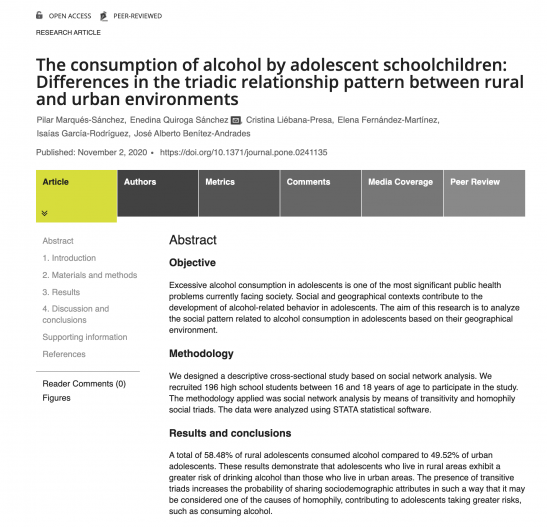- Published: November 2, 2020
- https://doi.org/10.1371/journal.pone.0241135
Abstract
Objective
Excessive alcohol consumption in adolescents is one of the most significant public health problems currently facing society. Social and geographical contexts contribute to the development of alcohol-related behavior in adolescents. The aim of this research is to analyze the social pattern related to alcohol consumption in adolescents based on their geographical environment.
Methodology
We designed a descriptive cross-sectional study based on social network analysis. We recruited 196 high school students between 16 and 18 years of age to participate in the study. The methodology applied was social network analysis by means of transitivity and homophily social triads. The data were analyzed using STATA statistical software.
Results and conclusions
A total of 58.48% of rural adolescents consumed alcohol compared to 49.52% of urban adolescents. These results demonstrate that adolescents who live in rural areas exhibit a greater risk of drinking alcohol than those who live in urban areas. The presence of transitive triads increases the probability of sharing sociodemographic attributes in such a way that it may be considered one of the causes of homophily, contributing to adolescents taking greater risks, such as consuming alcohol.
Citation: Marqués-Sánchez P, Quiroga Sánchez E, Liébana-Presa C, Fernández-Martínez E, García-Rodríguez I, Benítez-Andrades JA (2020) The consumption of alcohol by adolescent schoolchildren: Differences in the triadic relationship pattern between rural and urban environments. PLoS ONE 15(11): e0241135. https://doi.org/10.1371/journal.pone.0241135

